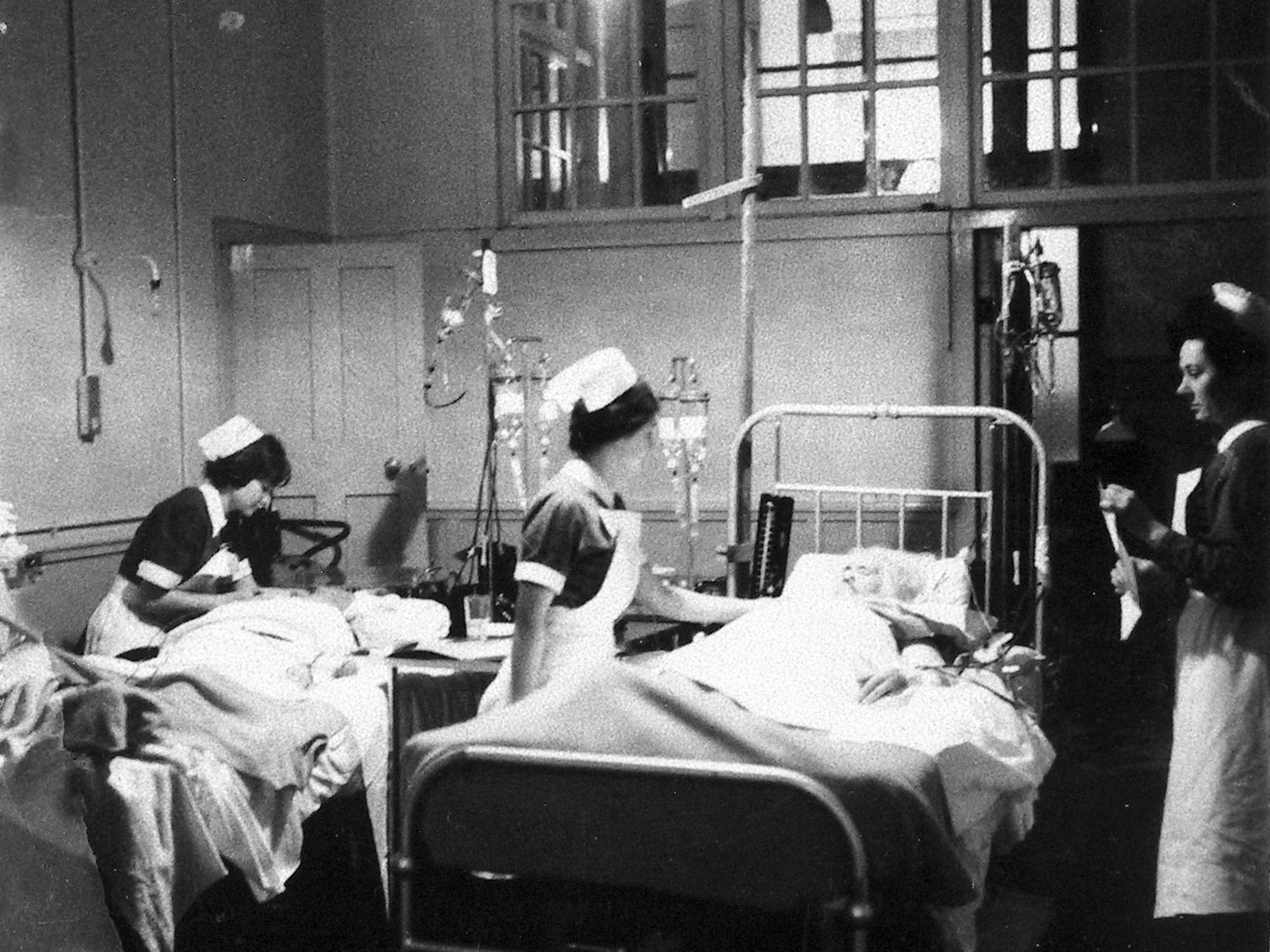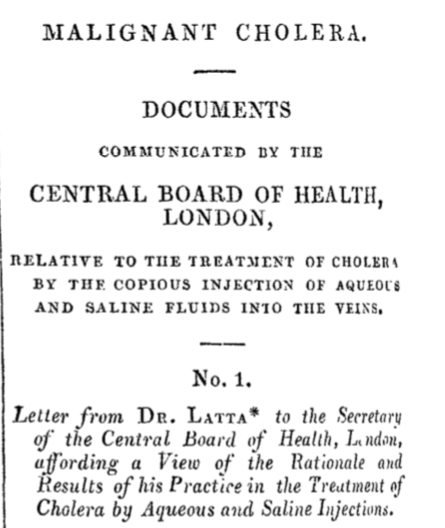Thomas Latta and the invention of IV fluid therapy

Thomas Latta was a physician in Leith when the second worldwide pandemic of cholera hit Scotland. The disease spread widely. It was still 20 years before John Snow proved beyond reasonable doubt that contaminated water was the cause, but therapies were also controversial. Blood letting was a staple treatment.
 Latta had read the 1832 reports from another Edinburgh graduate, Dr WB O’Shaughnessy, on the reduced amount of water in the blood of patients with cholera, and took up the idea of replacing it. He injected salty water into the basilic vein and in a letter to the Lancet published June 2nd 1832 described remarkable results. His treatment proved controversial, the pages of the journals of the time being filled with reports from both enthusiasts and sceptics.
Latta had read the 1832 reports from another Edinburgh graduate, Dr WB O’Shaughnessy, on the reduced amount of water in the blood of patients with cholera, and took up the idea of replacing it. He injected salty water into the basilic vein and in a letter to the Lancet published June 2nd 1832 described remarkable results. His treatment proved controversial, the pages of the journals of the time being filled with reports from both enthusiasts and sceptics.
Latta qualified in Edinburgh in 1819 and practised in Leith from 1822. He didn’t live to learn of the overwhelming final success of his new therapy, dying of pulmonary TB only 18 months after his observations in cholera. No portraits of him are known.
O’Shaugnessy had an impressively active brain and series of remarkable achievements (see refs below). He came from County Clare in Ireland to Edinburgh to study Medicine in Edinburgh in 1827, and received his MD in 1829 with a thesis entitled De Metastasi Rheumatismi Acuti. He went on to undertake toxicological and chemical research in Edinburgh then London. Early in the cholera epidemic he was sent from London to Sunderland to study some of the first UK patients, and reported back in January. He remarked that it was essential first to restore the blood to its natural specific gravity, and to correct the deficiency in ‘saline matters’. ‘the first of these can only be affected by absorption, by imbibition, or by the injection of aqueous fluid into the veins. The same remarks. . . apply to the second.’
Further info
- More about Thomas Latta on the History of Nephrology blog,
- MacGillivray N 2006, Dr Latta of Leith, J R Coll Physicians Edin 36:80-5 (pdf)
- Venters GA 2015, Leith in the time of cholera – The story of Thomas Latta. Hektoen International 2015
- John B Moon 1967 (paywall). Sir William Brooke O’Shaugnessy – the foundations of fluid therapy and the Indian Telegraph Service. New Engl J Med 276:283-4
- Neil McGillivray 2017 (paywall) Sir William Brooke O’Shaughnessy, chemical pathologist, pharmacologist and pioneer in electric telegraphy. J Med Biography 25:186-96 (first published online Sep 2015)




Recent comments